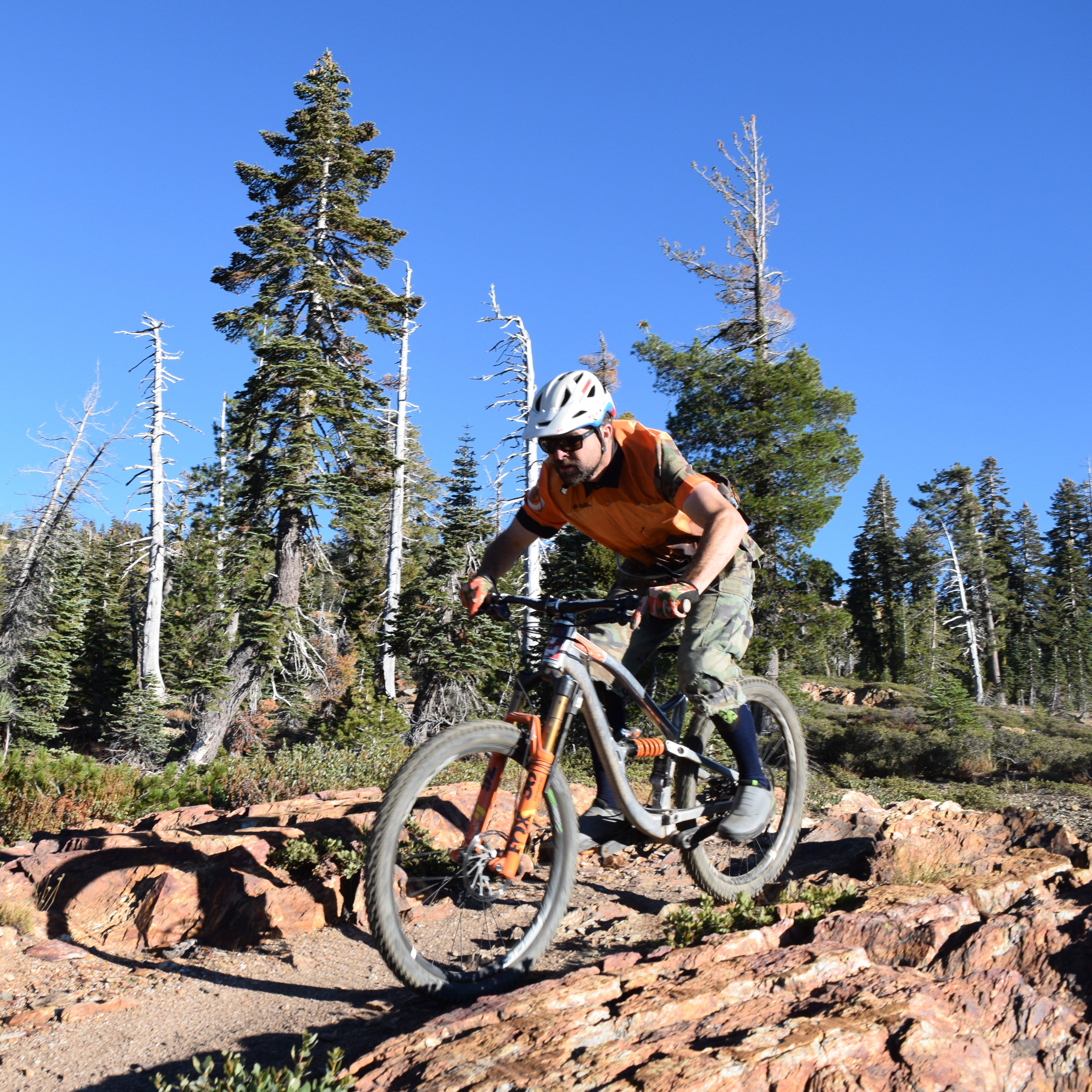We follow a lot of up and coming racers out there. We had heard of Dillon Santos through the work we did with Ibis over the last couple of years. Dillon had done a lot of testing on our system with Ibis and DVO. When he moved to the Yeti team, Dillon reached out to us to help him with setup. Since we were out of stock, we just pulled a system off of my (Rob’s Ibis RipmoV2) bike and stuck it on his Yeti SB 150. Then he was off to test with very little help from us. Check out his experience below:

“Man oh man where to start! Robert was kind enough to let me borrow his system to test on my Yeti SB150. Having just moved to the Yeti team 2 weeks prior, I needed a fast track to a dialed bike before the first race. I am pretty in tune with my bike and able to make the correct changes to my suspension, however this takes time. Sometimes weeks and months of riding go by to find a good setup. Time was not on my side and I felt pressured to accelerate this testing.
The biggest benefit to the Motion Instruments system was the ability to make changes based on the data as well as feeling. Correlating subjective feeling to quantitative data is a major benefit to the system. Another thing I found beneficial was how easy the system was to use. With the click of a button you have a whole data set that is key to unlocking maximum potential of both your bike and your riding. I started out with what seemed to be a good setup. However, over the course of 2 days and about 25 shuttles runs we inched closer and closer.
Some tips that I found helpful was first work towards balance! The suspension balance charts work wonders for the bike. Finding the correct front to rear balance on the air spring or spring rate is critical for a good ride. Next you move to compression and rebound. With easy to read charts and a systematic testing process, taking the data and applying it back into bike settings has never been easier.
Some key changes I made over the course of the weekend for all you data nerds:
|
Initial Settings |
Final Settings |
|
Rear - Fox Float X2: 146 PSI |
Rear - Fox Float X2: 151 PSI |
|
Volume Spacers: 2 |
Volume Spacers: 3 |
|
Low Speed Rebound: 18 |
Low Speed Rebound: 19 |
|
High Speed Rebound: 18 |
High Speed Rebound: 18 |
|
Low Speed Compression: 12 |
Low Speed Compression: 14 |
|
High Speed Compression: 12 |
High Speed Compression: 16 |
|
Front - Fox Float 36: 68 PSI |
Front - Fox Float 36: 62 PSI |
|
Volume Spacers: 2 |
Volume Spacers: 1 |
|
Low Speed Rebound: 8 |
Low Speed Rebound: 7 |
|
High Speed Rebound: 4 |
High Speed Rebound: 3 |
|
Low Speed Compression: 6 |
Low Speed Compression: 6 |
|
High Speed Compression: 12 |
High Speed Compression: 10 |
Compression balance chart: Normalized for vertical motion with different travel lengths
Rebound balance chart: Normalized for vertical motion with different travel lengths
As you can see more changes in the rear than the front. My main feelings were getting the rear to catch up and balance out with the fork. After countless time bracketing going as high as 155PSI and 4 VS and back down I found a sweet spot. This system has proved to be a valuable tool for racers as well as every day riders! I got to a setup I was happy with in just 2 days. 1 of which was cut short due to some out of control factors. I am 100% believer in this system and a customer. If you have ANY QUESTIONS! Feel free to reach out to me on social platforms (@dillon_santos771 on Instagram) and I would love to help!”
As far as racers using our system, everyone has learned a ton about their bike. What has been consistent is every rider has a much better bike once using our system. Having data specific to your bike, riding your speeds, on your trails will give you confidence you aren’t leaving anything on the table. If you are using data on power meter training, location, heart rate, and nutrition, but are not using data to get your bike set up, you will not get to your potential. If you look at Dillon’s before and after settings, they may seem subtle, but they are not. He changed air pressure, compression and rebound settings, and volume spacers for both the fork and shock. With his bike, there are over 7 billion setting permutations between the front and rear, and that’s holding air pressure constant. Dillon did several weeks worth of testing in a very accelerated time frame.





